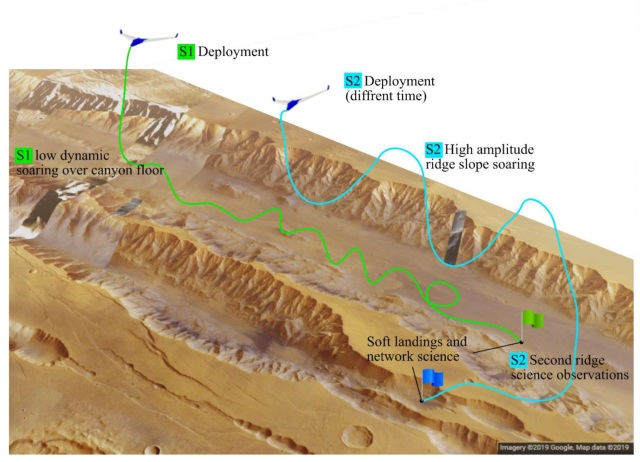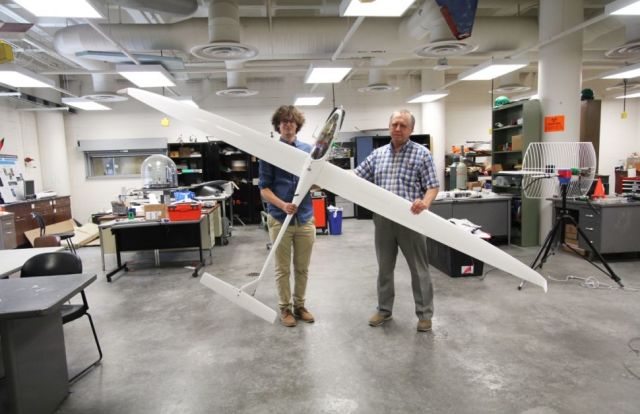Planetary scientists and engineers from the University of Arizona presented a project of a glider that can fly for a long time in the atmosphere of Mars, studying the canyons. It is assumed that two such devices with inflatable deployable wings can be launched from a balloon or airship. The article was published in the journalAerospace.
Mars exploration is currently being conducted using orbiters, landers and all-terrain vehicles. However, there are tasks that are still difficult to solve, such as mapping regions of the planet with a resolution of less than 10 centimeters per pixel, studying terrain elements that are difficult for planetary rovers to access, and determining the properties of the atmosphere within a few kilometers from the surface of Mars. Such tasks can be performed by unmanned vehicles capable of flying in the rarefied atmosphere of the planet, such as the ARES (Aerial Regional-scale Environmental Survey) aircraft project proposed earlier or the Ingenuity helicopter operating on the planet for more than a year.
A group of researchers led by Adrien Bouskela from the University of Arizona presented a project of a glider capable of flying in the atmosphere of Mars from 20 minutes to a day, studying the geology and relief of the planet's surface using cameras, and atmospheric parameters using sensors, and then landing, turning into a stationary weather station. The main targets of gliders can be canyons, where there are favorable conditions for a gliding flight.

A diagram of the possible deployment of the glider.
Image source: Adrien Bouskela et al. / Aerospace, 2022
It is assumed that the glider will have a mass of 5 kilograms with a wing area of about 1.8 square meters and a span of about 3.4 meters. The researchers proposed two variants of inflatable wings deployed by injecting nitrogen into them — with a rigid support structure made of carbon composite, which unfolds first, or without it. Nitrogen will be generated by a special glider system.
A gliding flight can take place in three modes: static soaring in thermals or updrafts generated by obstacles, dynamic soaring using vertical gradients with horizontal wind, and maneuvers along the crests of the canyon.
The delivery of two gliders to Mars can be either part of a larger research mission, or a separate program in which a balloon or airship will be delivered to the planet, which will launch the gliders. The research program consists of five stages: initial deployment, navigation planning, search and observation of scientific targets, study of remote, secondary targets and transformation into a surface weather station.

A diagram of a possible glider flight on Mars.
Image source: Adrien Bouskela et al. / Aerospace, 2022
Why flying in the atmosphere of Mars is not as simple as it seems at first glance, you can learn from our material "The Martian screw" .
Alexander Voityuk

